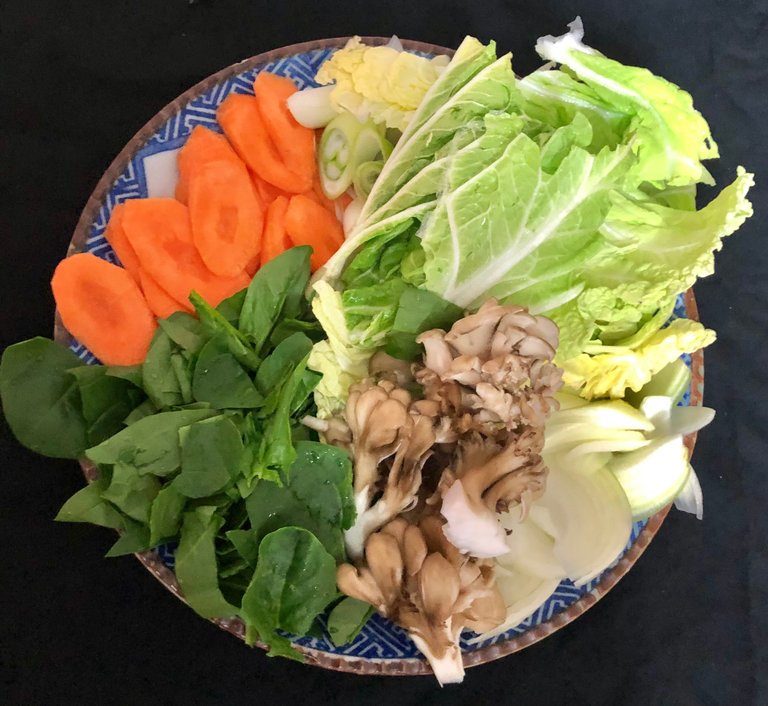
Vegetables for nabe
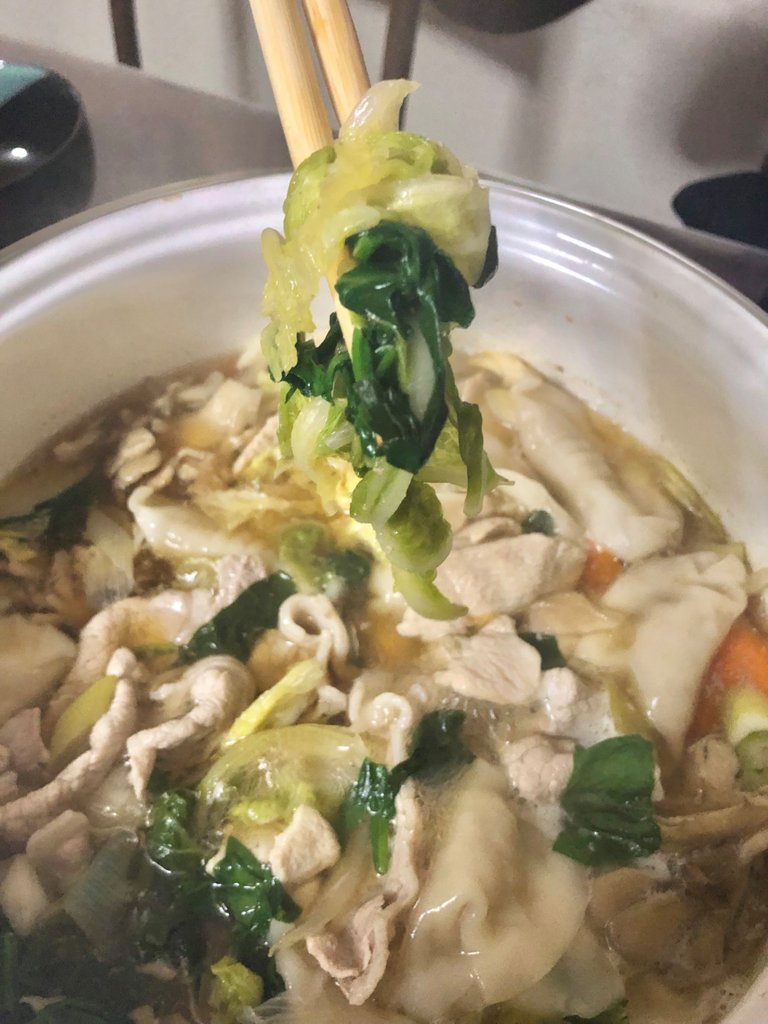
Nabe is ready to be served.
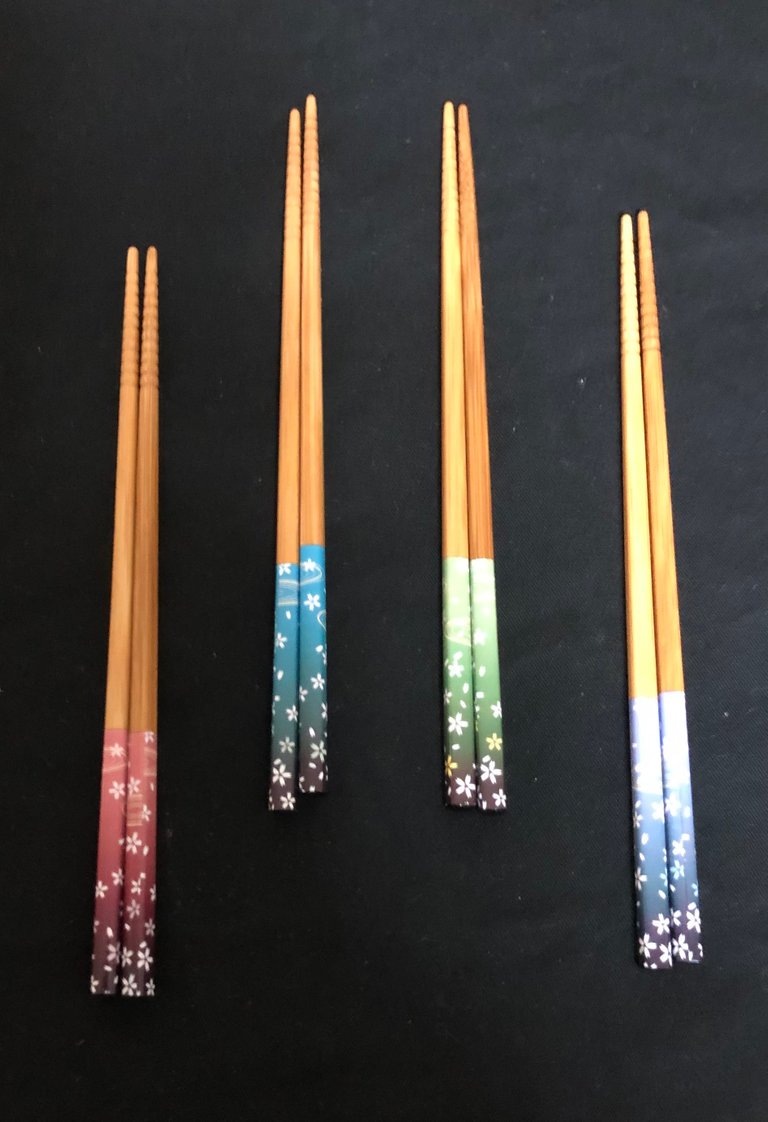
Chopsticks
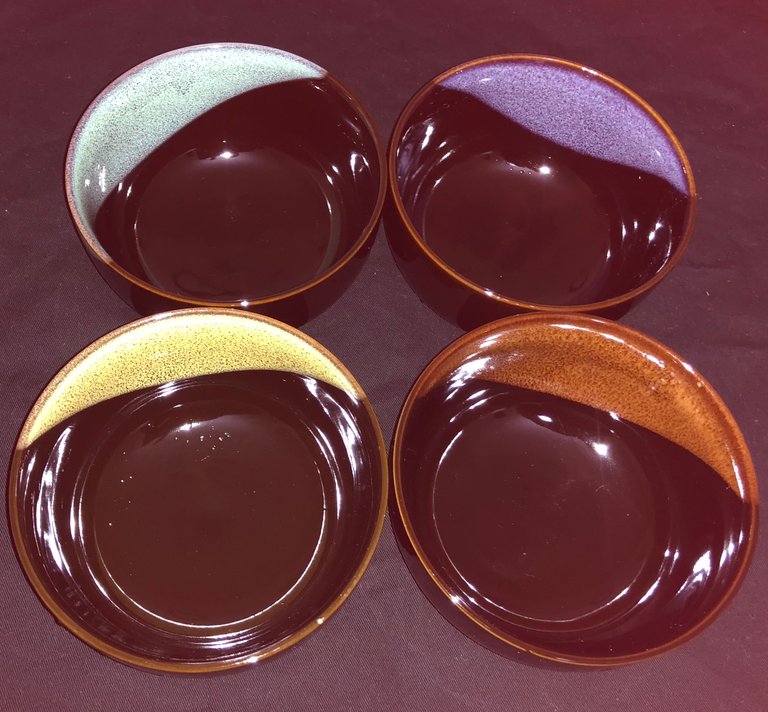
Bowls for each diner
Hi fellow hivers and members of @foodiesbeehive. It’s nabe or hot pot season in Japan. As temperatures get lower, it’s so warming and heartwarming to sit and enjoy a hot pot meal. Some choose to go to restaurants for such meals while some do home-cooking. There are several kinds of nabe. The soup (there are so many kinds) gives flavor to the ingredients which are usually one or more of the following:
vegetables, tofu, meat, fish and poultry.
Variety of Soups
The soup is usually a packaged item that just requires being opened and heated in the pot. Some of them are concentrated and may require the addition of water. Often times the quantity in the package serves for 3-4 people. It is fun to choose from a variety of flavors. Some may be fish-based, chicken-based, miso-based, kimchi-based and so on. Other ingredients are often chosen based on the type of soup but for some, any ingredient of choice goes. Ofcourse some people make their own soup bases from scratch and some maybe do a combination of soup flavors.
Thin Slices for Easy-Cooking
Meat fish and poultry are usually cut in thin slices so they are cooked in a very short time. The exciting part of “nabe-ing”, should I call it that, is that cooking happens by the dining table. Food items that require longer periods for cooking are usually prepared to a degree that requires a short cooking time by the table. Diners enjoy putting the ingredients in the pot and the togetherness of it all strikes up good conversation and laughter. “Everybody cooks”.
Cooking By the Dining Table
My family often eats various kinds of soups during this season but they’re usually prepared in the kitchen and then served. This year is very exciting for us because we got our little nabe equipment and for the first time, cooked soup on the dining table. The kids love it and we all enjoy it. As a matter of fact, we basically had a nabe week right after we got our nabe set. Haha! We were too excited about cooking by the table and trying different soups.
The Process
We start by gathering all that we need. We carry everything to the dining table. In the above photos, you can see some bowls, chopsticks and some of the ingredients. On the table we put the table-top stove, vegetables, pork slices, chicken slices, soup, pot, cooking chopsticks, dumplings and gas cassette.
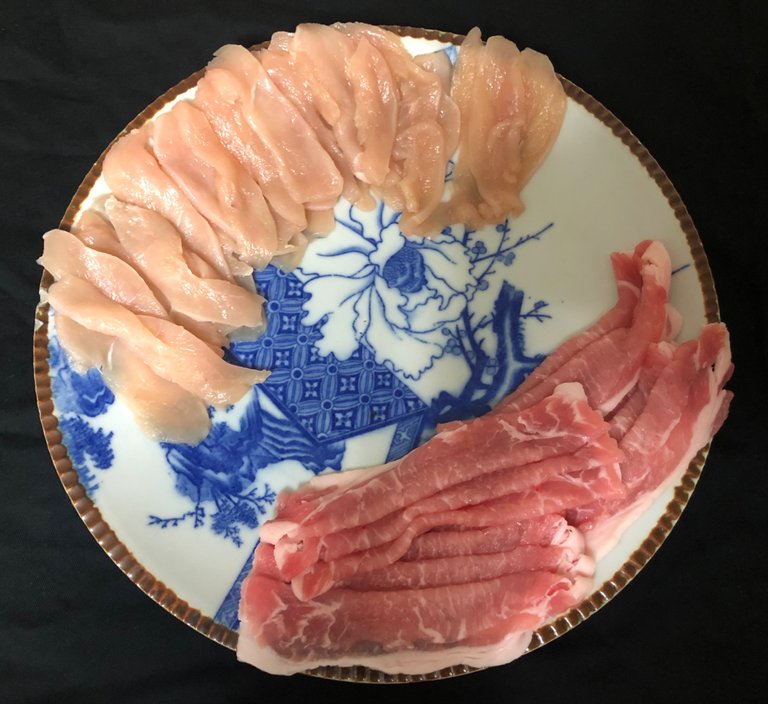
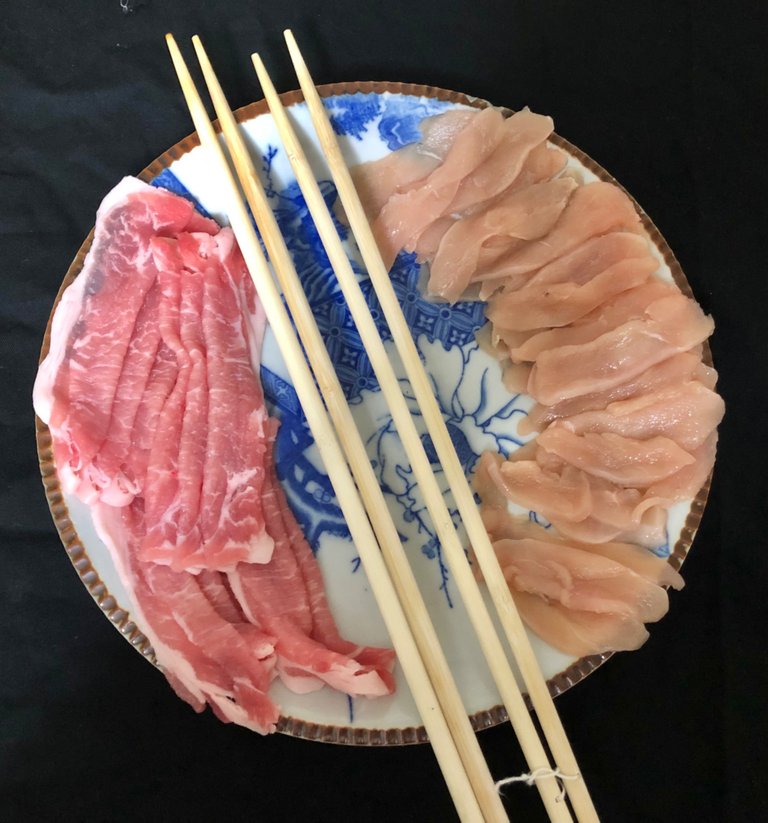
Thin slices of pork and chicken.
These were pre-packaged and bought at the supermarket. The slices are “nabe-ready”.
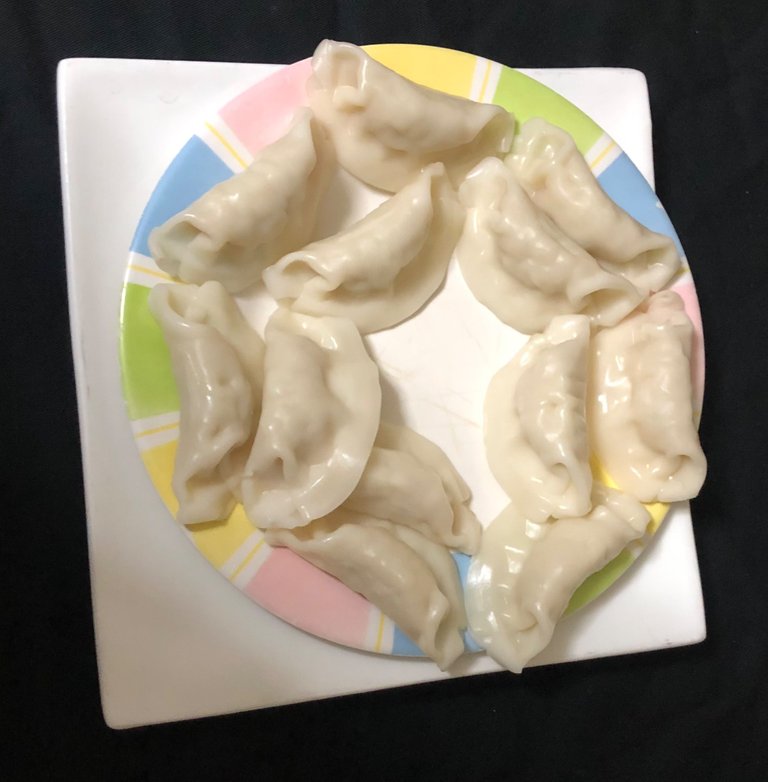
Dumplings that are stuffed with minced pork and vegetables.

Cabbage, greens, mushrooms, onion, sweet scallion and carrots
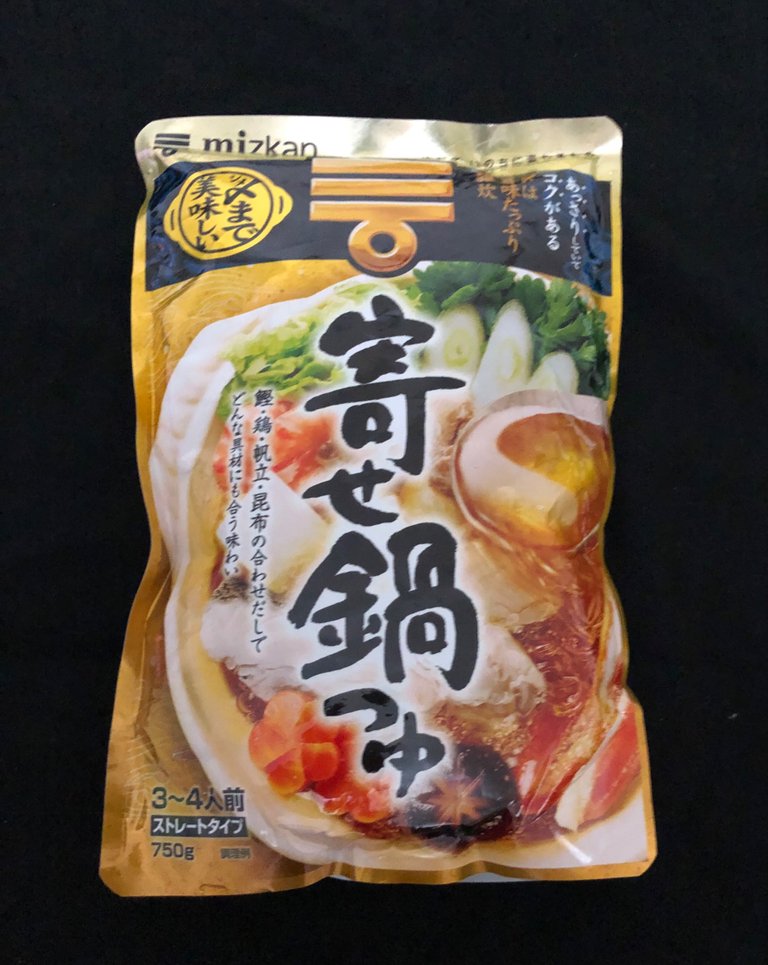
Soup (has a base of chicken, scallops and kombu seaweed).
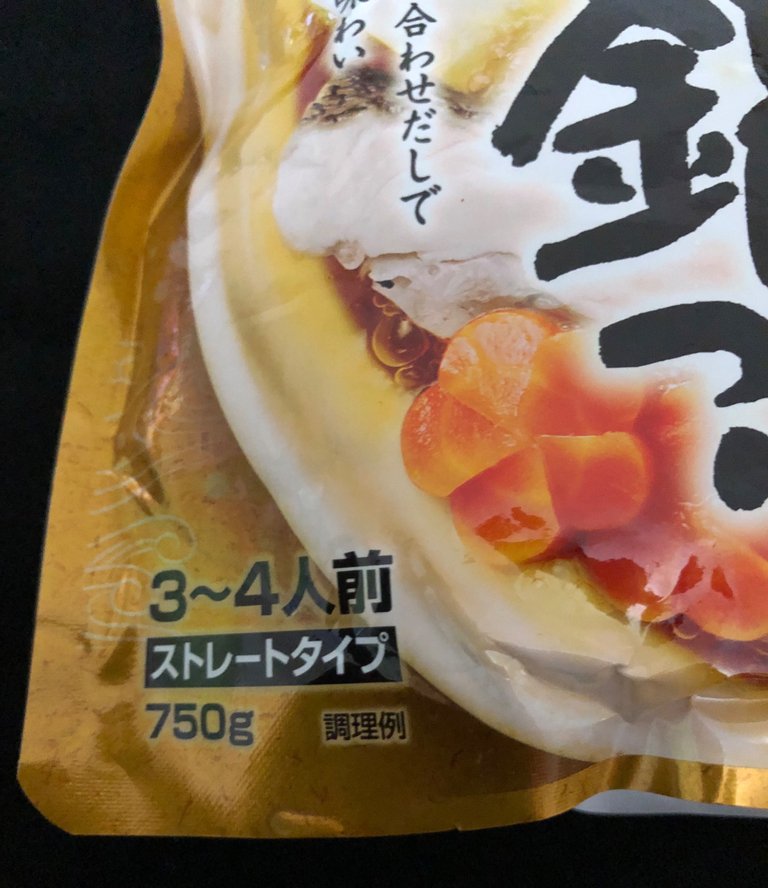
750g of soup, serves for 3-4 people
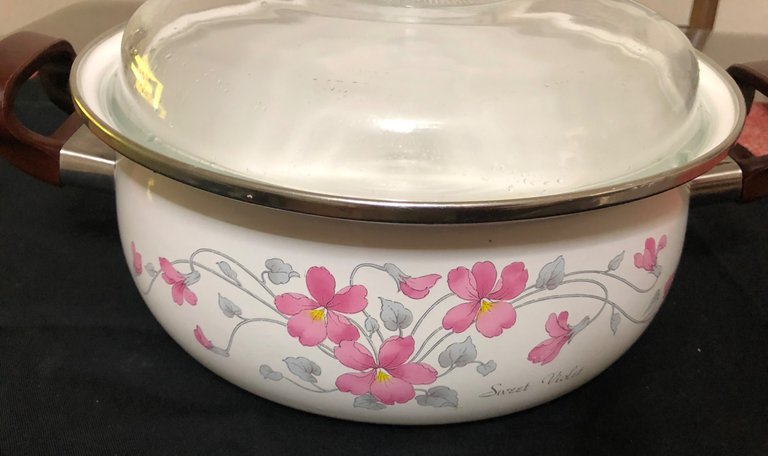

We got this enamel pot from a friend about twelve years ago. It worked well for nabe.
The vegetables are washed, cut or broken into slices or smaller pieces and placed on a platter.
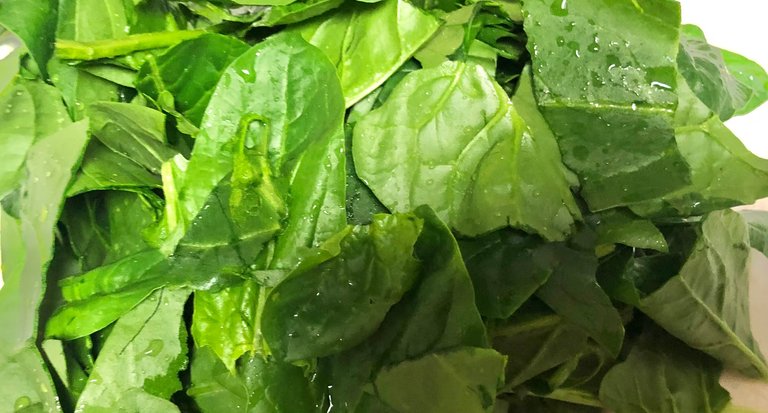
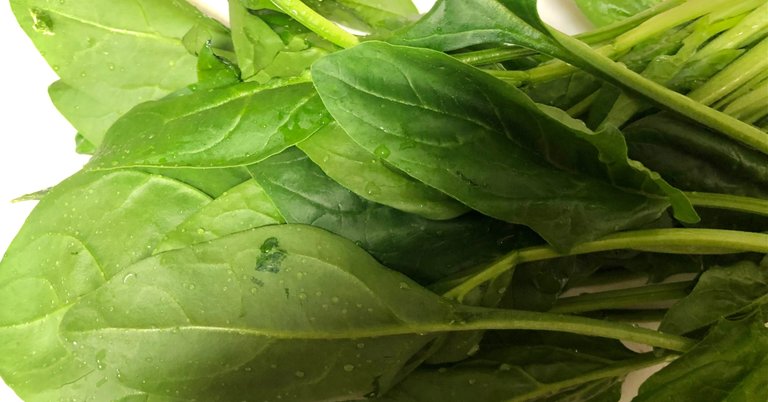
Cut or break greens in desired pieces.
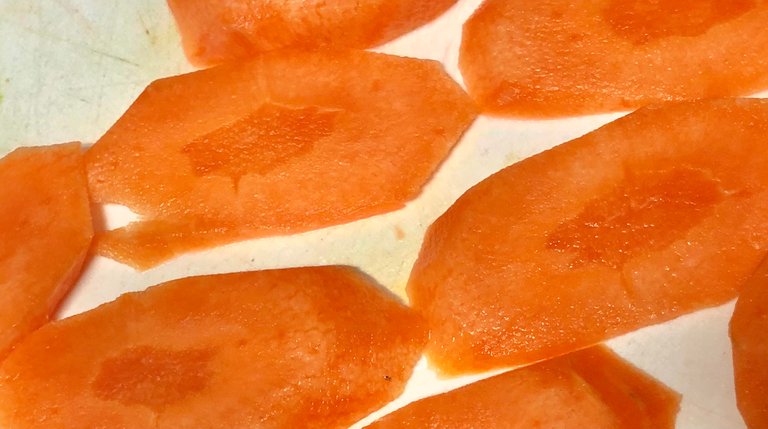
Cut carrots in diagonal slices or to your style of preference.
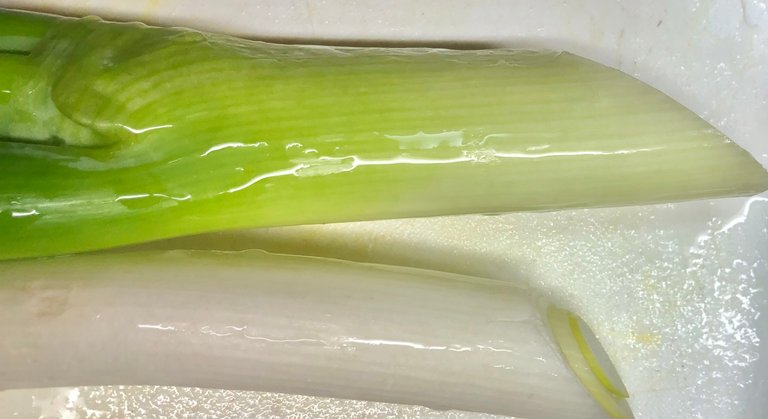
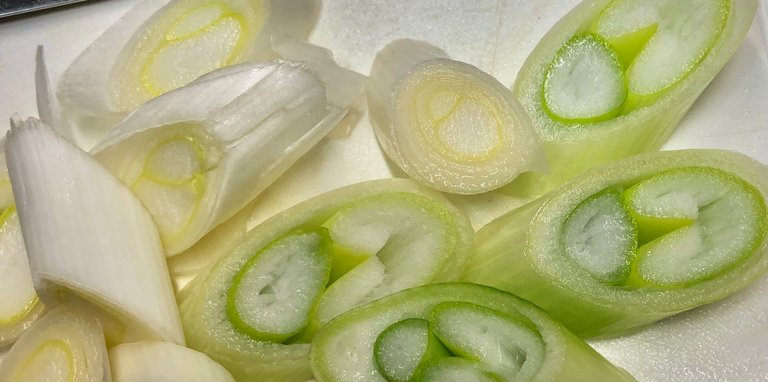
Cut escallion in diagonal or desired slices.
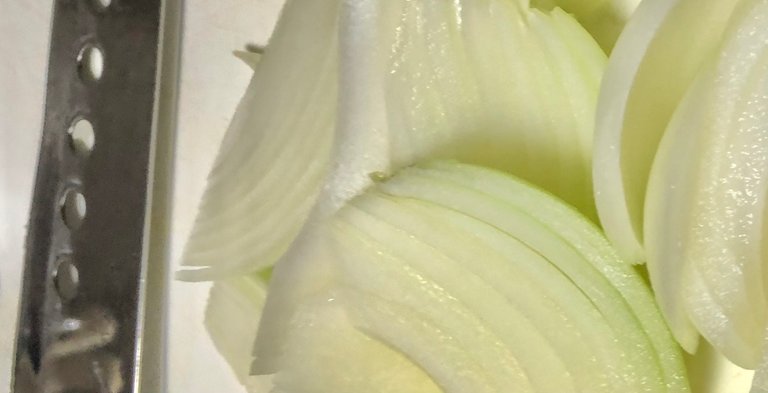
Cut onion in chunks or big slices.
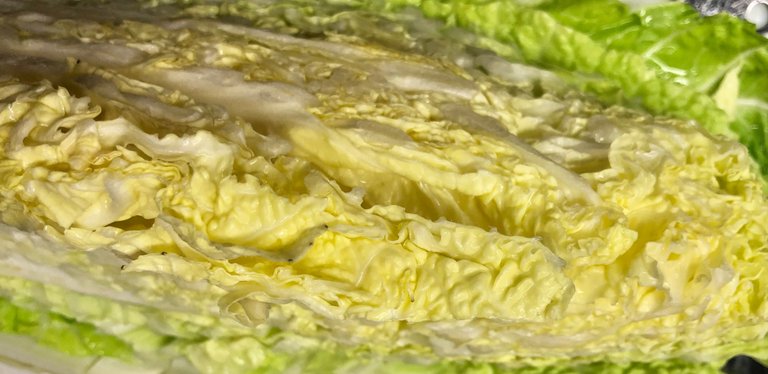
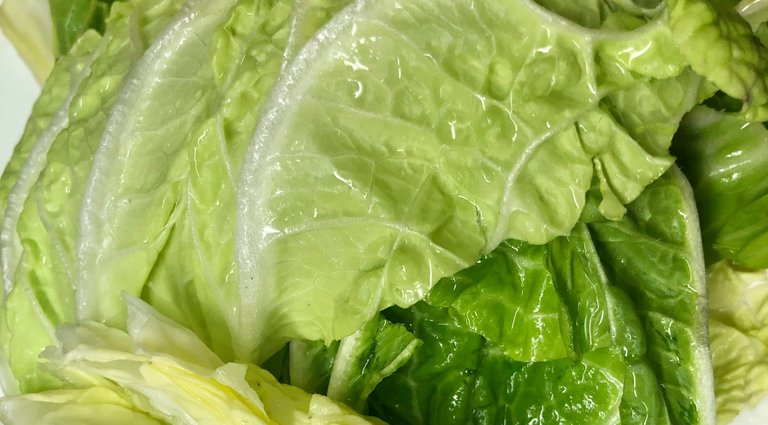
Break cabbage in pieces using especially the leafy parts.
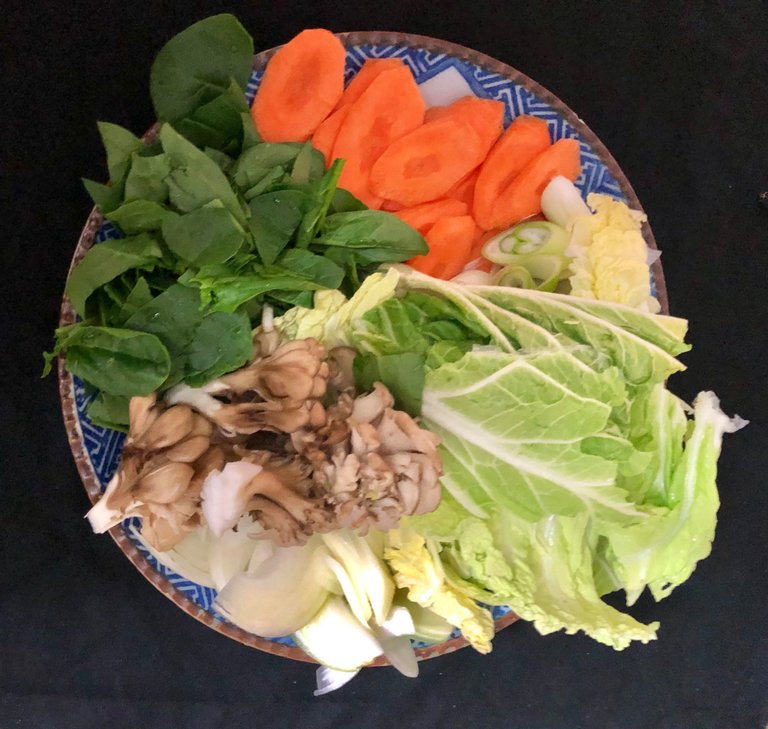
Place them all on a platter.
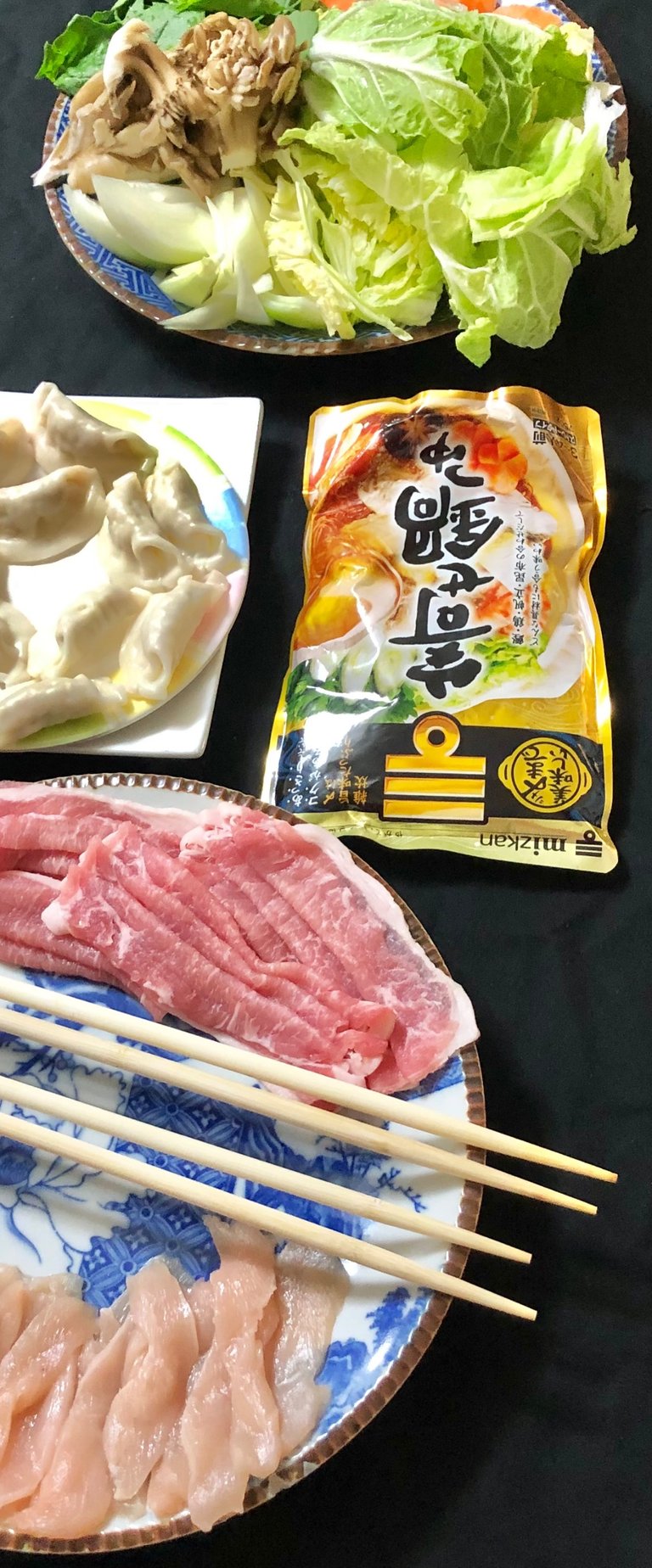

After all the ingredients are prepared, the stove is set and turned on.

Stove placed on the dining table.
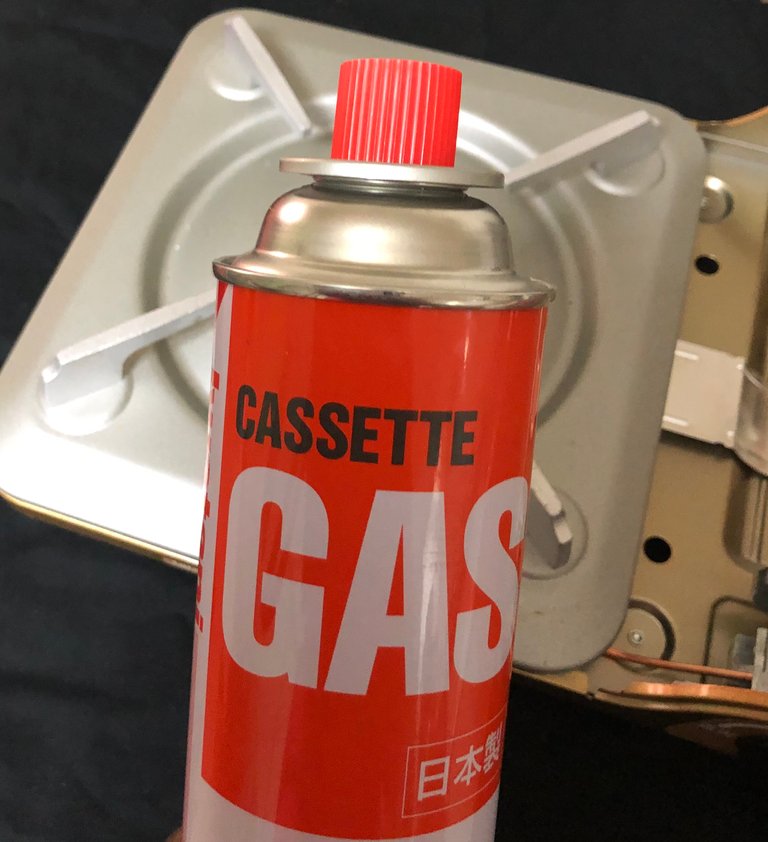
Gas cassette
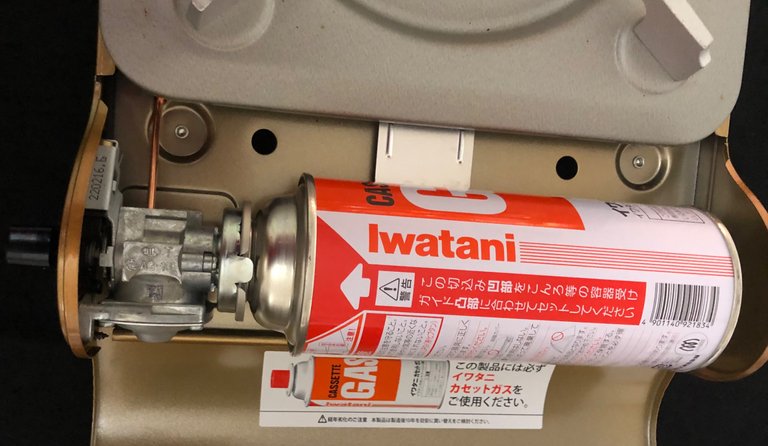
Inserted gas cassette. This works well for camping as too.
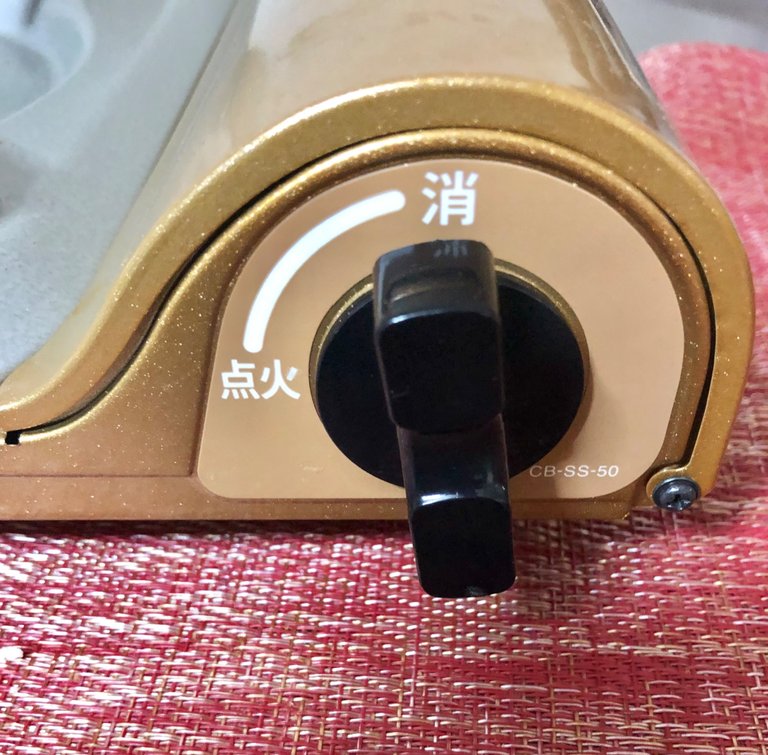
Knob for controlling the flame
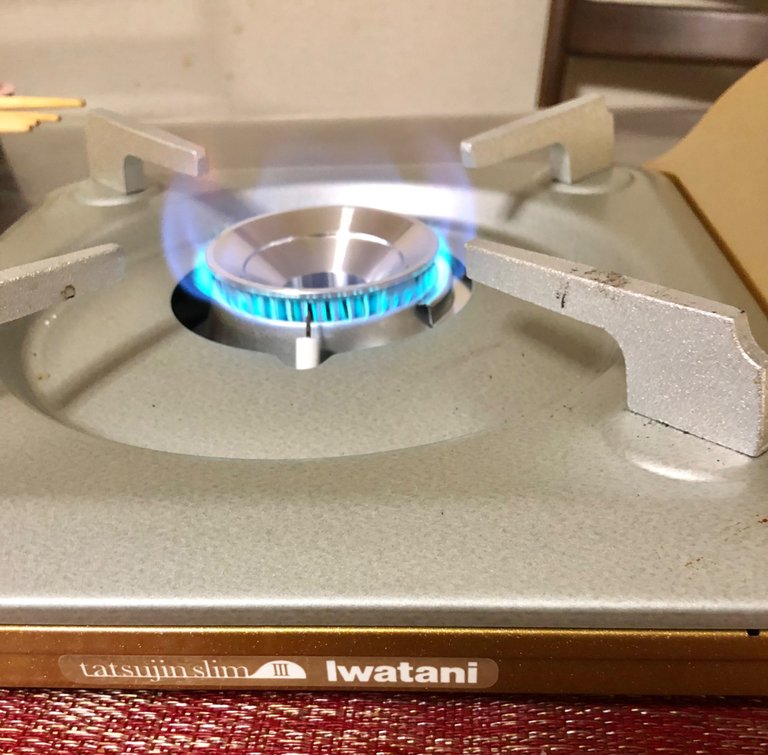
The flame
The soup is added to the pot. When heated, the ingredients are added in any order or order of preference. After a few minutes, the items are cooked, ready for eating and may be served. Diners often help themselves.
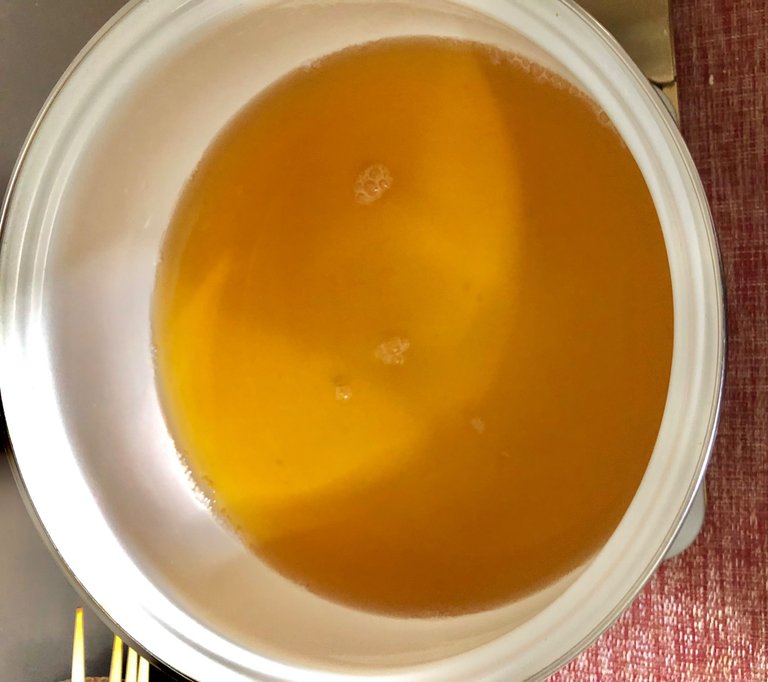
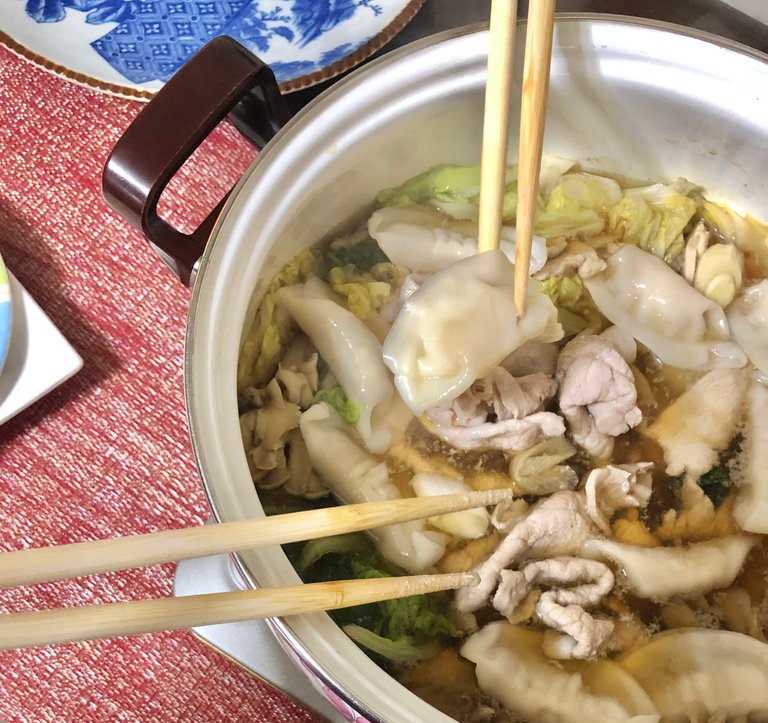
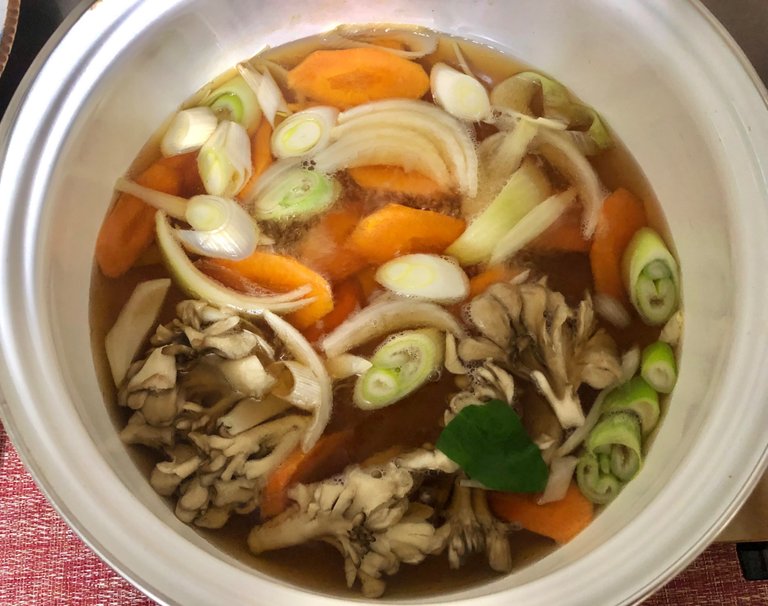
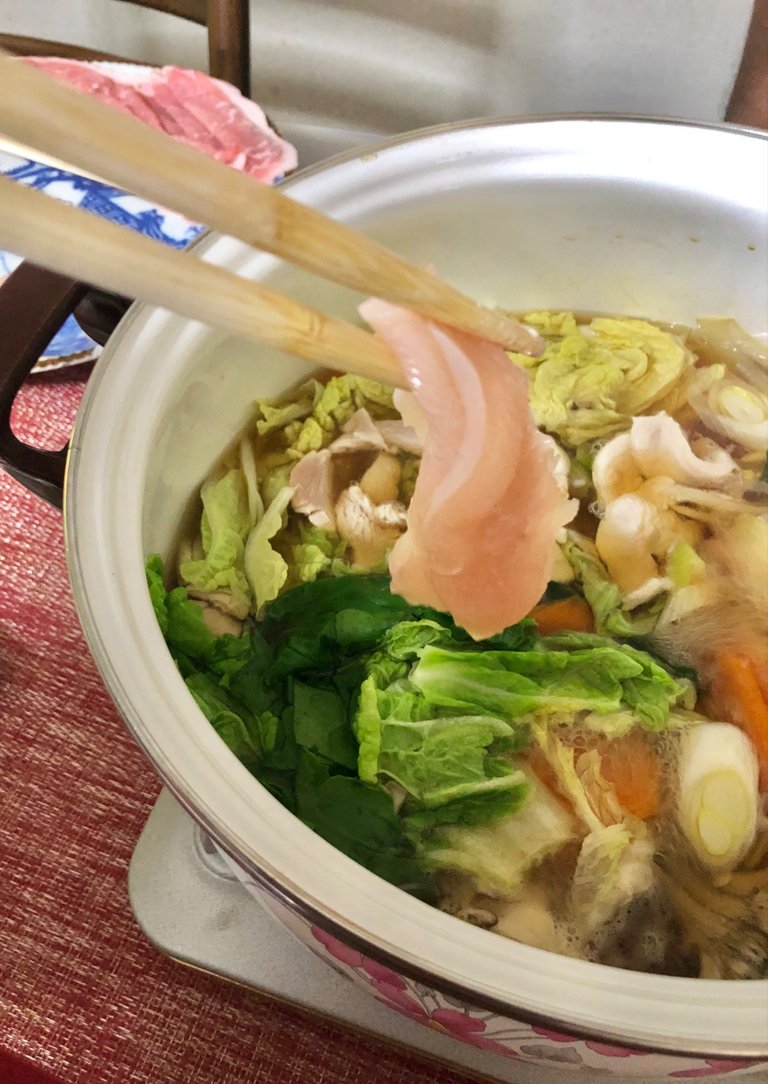
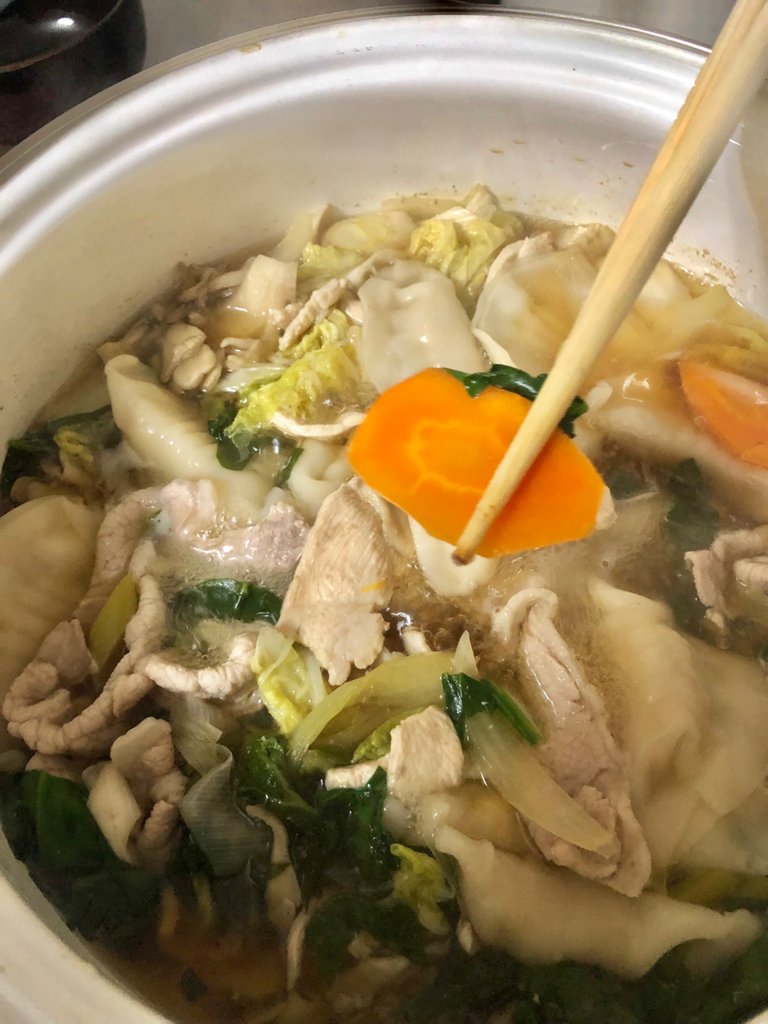
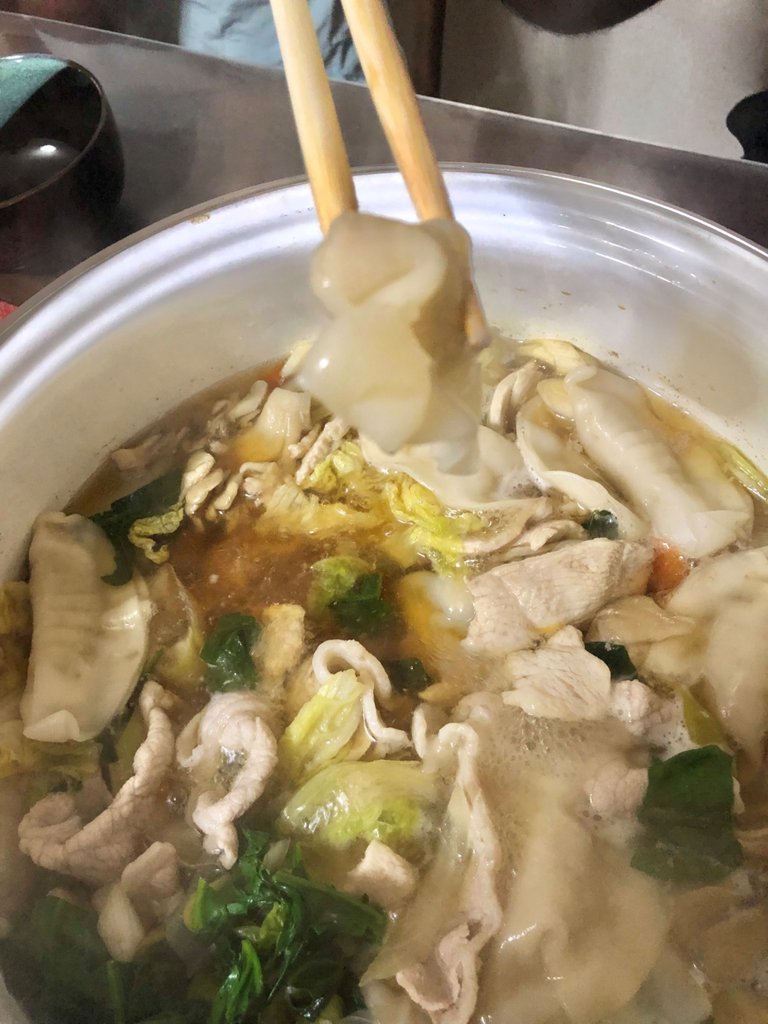
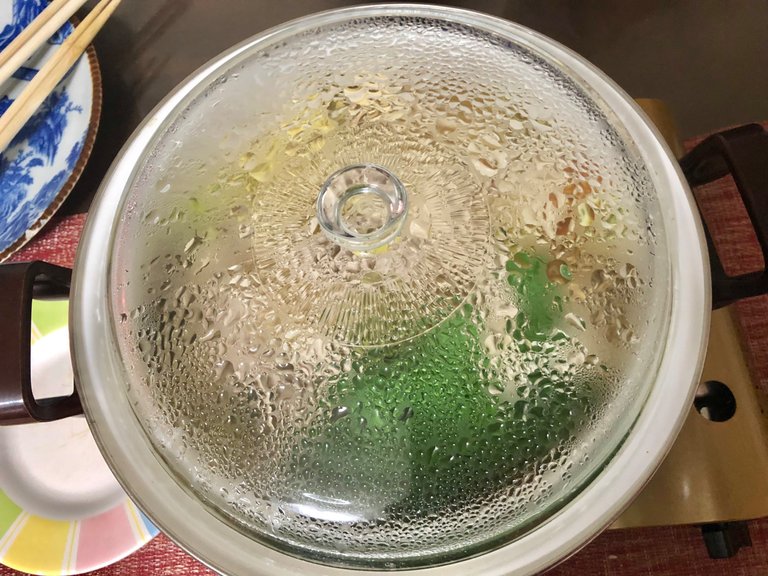
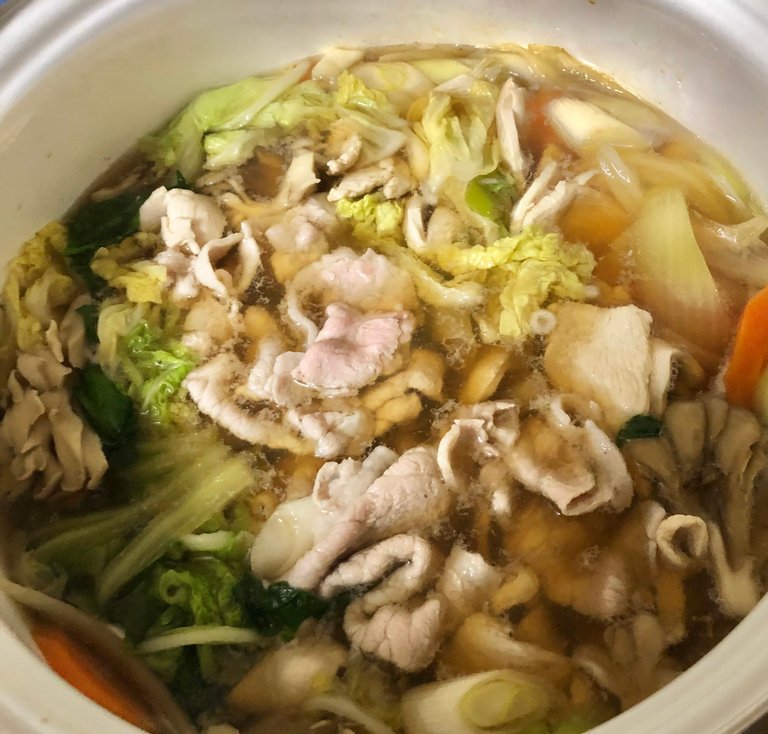
Great conversations are had over nabe. It’s a fun season.
What dishes do prepare especially for the cold season?
Thank you for reading my post. Have a lovely weekend. 😃🎶





